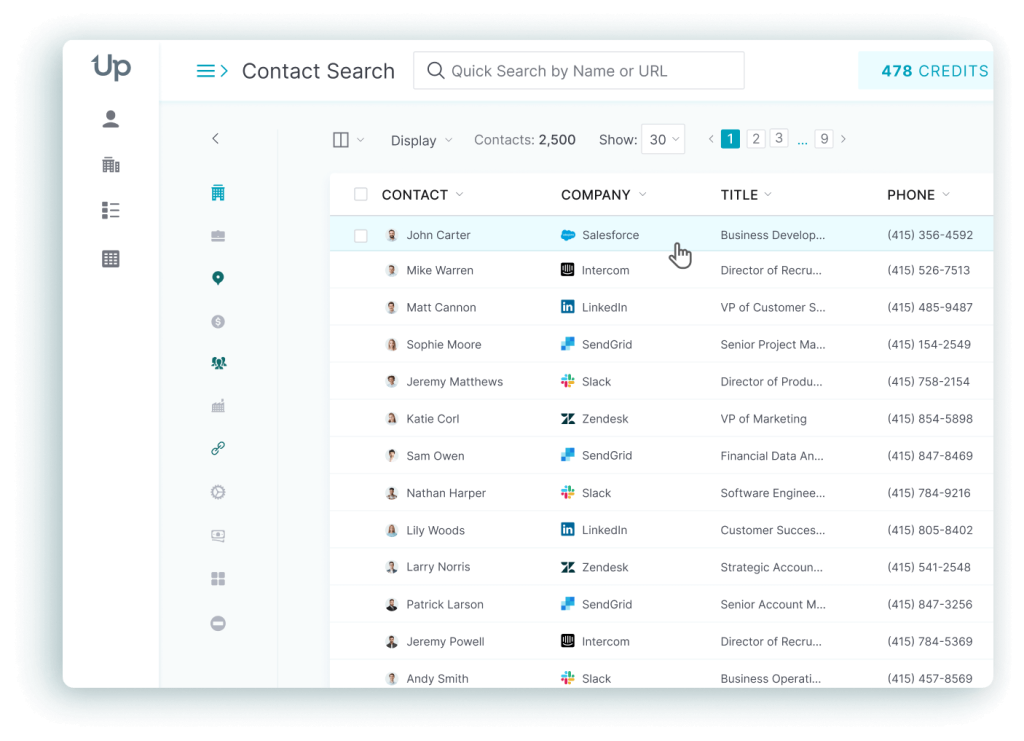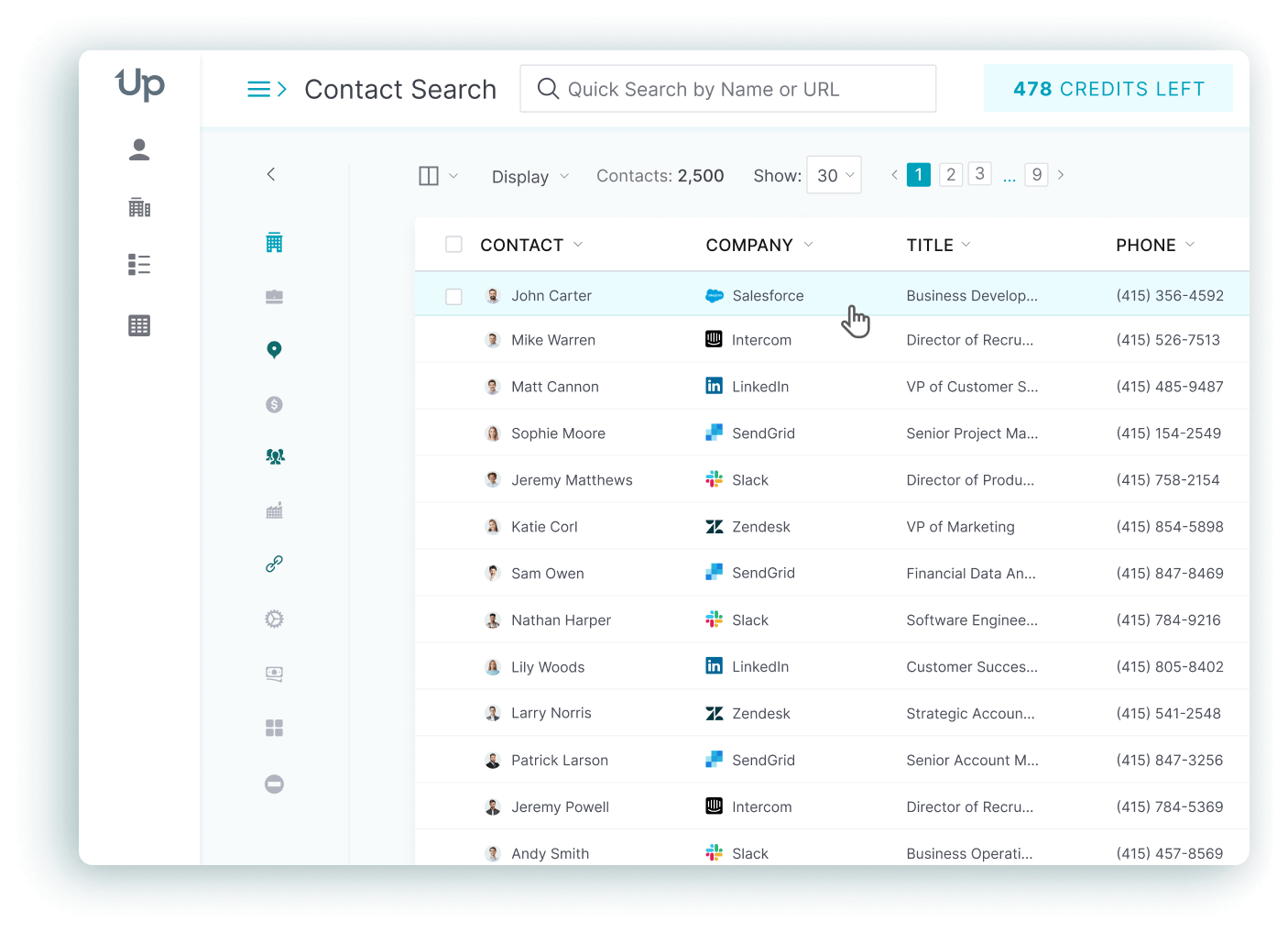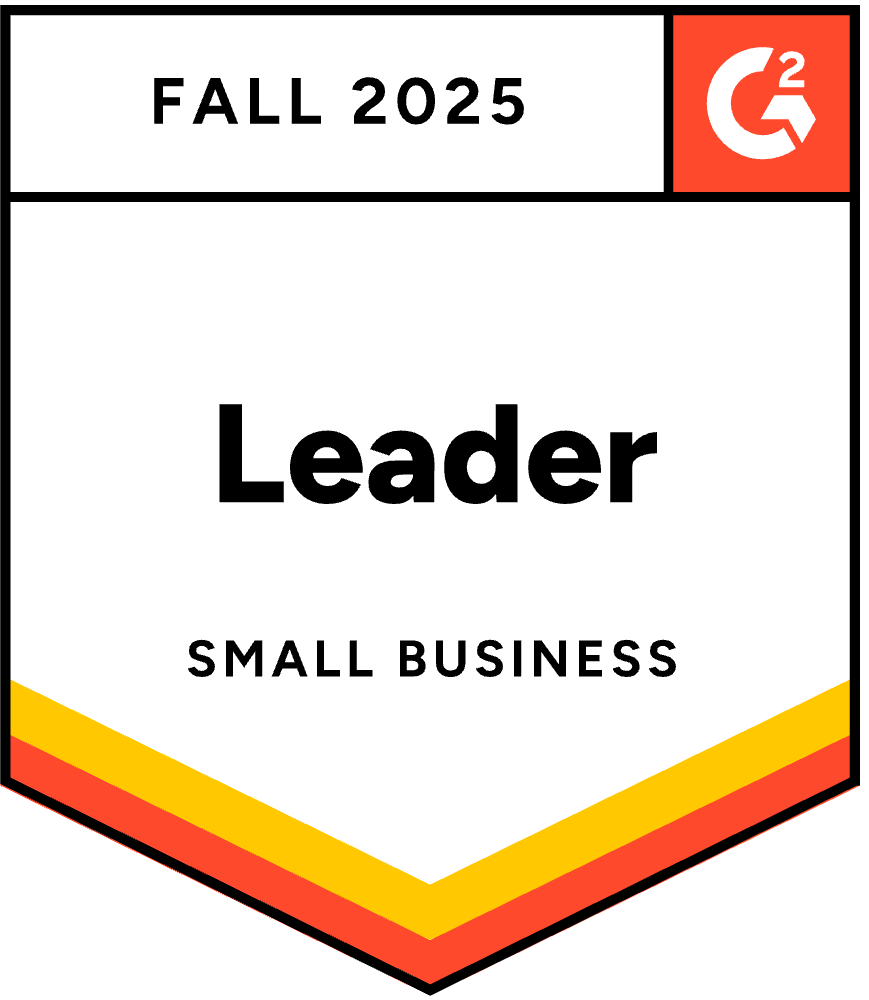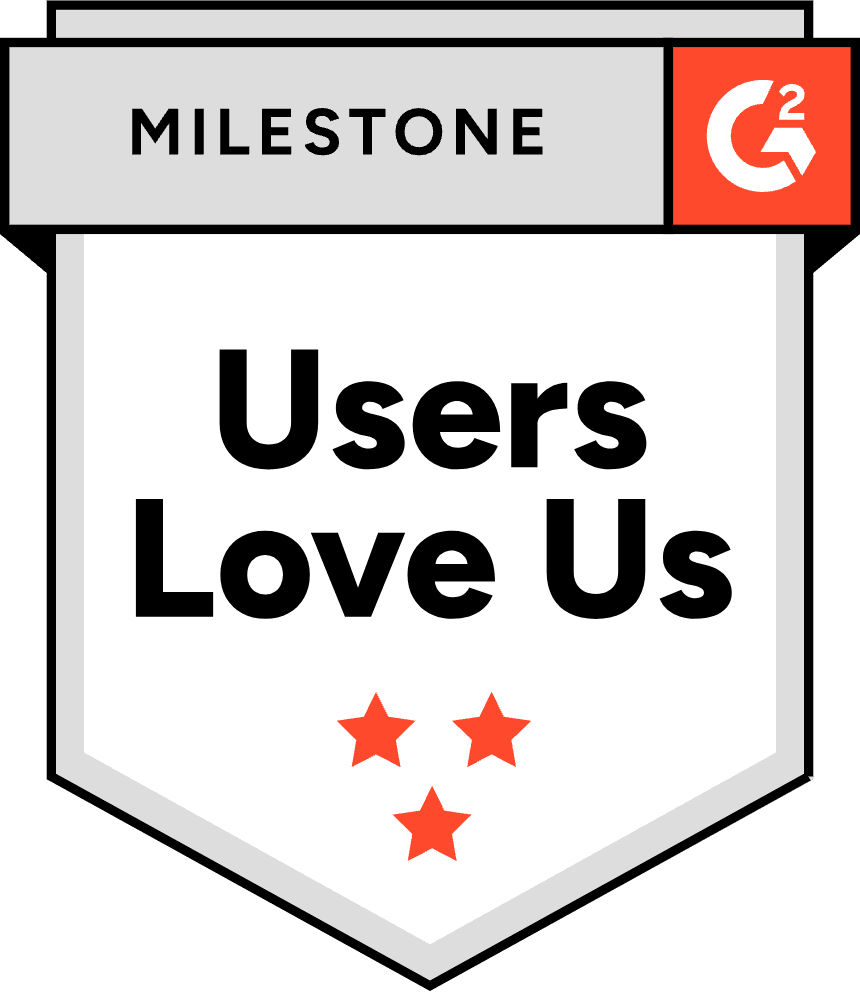Inside sales is remote B2B selling via phone, email, and video—prioritizing scale, data, and multi-touch workflows. Compared with field sales, it’s cheaper per contact and pairs well in a hybrid model for complex deals.
Key takeaways:
- Inside sales teams cost 40-90% less per customer acquisition than outside sales teams
- Hybrid inside and outside sales models drive up to 50% more revenue than pure approaches
- Inside sales representatives earn $53,964 base salary with $82,442 total compensation in 2025
What Is Inside Sales?
Inside sales is the process of selling products or services remotely using digital channels like phone calls, email, and video conferencing, as opposed to in person meetings and face to face conversations. This modern sales strategy has become the dominant model for B2B companies, with Gartner predicting that by 2025, 80% of sales interactions between suppliers and buyers will happen in digital channels (Gartner, via Pitcher).
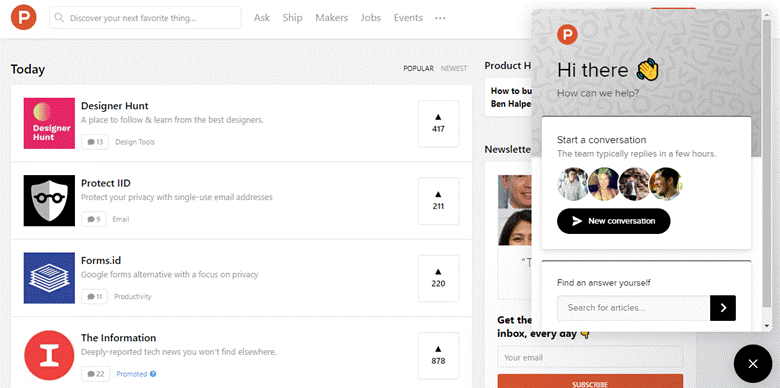
Live chat on the website for inside sales teams
The sales model has evolved far beyond simple phone calls. Today’s inside sales professionals leverage sophisticated sales tools, customer data analytics, and multi-channel outreach to build lasting customer relationships and sell products without ever meeting prospective customers in person. This shift represents a fundamental transformation in how businesses approach their sales strategy, driven by changing buyer preferences and technological advancement.
You might also encounter terms like “virtual sales,” “remote sales,” or “customers remotely” – these all refer to the same concept of inside sales reps conducting sales activities through digital channels rather than face to face interactions.
Inside vs. Outside vs. Telesales: Quick Comparison
| Approach | Inside Sales | Outside Sales | Telesales |
|---|---|---|---|
| Goal | Long-term customer relationships, complex deals | High-value, relationship-driven deals | Quick closes, transactional |
| Sales Cycle | Medium (weeks to months) | Long (months to years) | Short (single call to days) |
| Interaction Style | Multi-touch via phone, email, video | Face to face meetings, events | Phone-focused, often scripted |
| Typical ACV | $10K-$100K+ | $50K-$500K+ | $500-$10K |
What’s the Difference Between Inside Sales, Telesales, and Telemarketing?
Inside sales is often confused with telesales and telemarketing, but inside sales representatives serve different purposes and require distinct key skills. Inside sales refers to a strategic, consultative sales process focused on building relationships with potential customers and closing deals through multiple customer interactions across various digital channels.
Telemarketing, in contrast, is primarily a direct marketing tactic focused on short-term goals like lead generation or simple product sales, typically involving scripted, single-call interactions with a broader, less-targeted audience. Telesales falls somewhere between the two sales models – it’s focused on direct selling over the phone but usually involves transactional, single-call closes for simpler products.
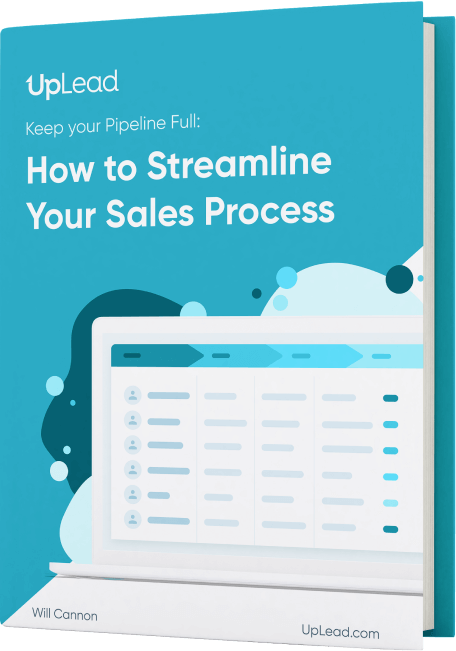
What Is the Difference Between Inside and Outside Sales?
The primary difference is that inside sales reps sell remotely using digital channels like phone and email, while outside sales reps travel to meet potential clients through face to face meetings. However, the modern sales landscape has evolved into a hybrid model where both inside and outside sales approaches complement each other strategically in the sales pipeline.
According to recent data, inside sales now represents approximately 47% of all sales professionals in the United States, while outside sales accounts for 53% (InsideSales report, 2017). This shift reflects changing buyer preferences and the proven efficiency of remote sales models for reaching target customers.
What Are the Key Advantages of Inside Sales?
Inside sales offers significant advantages over traditional outside sales teams, particularly in terms of cost effectiveness, scalability, and data-driven optimization for inside sales success.
Massive Cost-Effectiveness: An inside sales call costs approximately $50, whereas an outside sales visit averages $308 (PointClear via MarketSource/Forbes). This contributes to an overall customer acquisition cost that is 40% to 90% lower for inside sales teams compared to outside sales teams when converting prospective customers into paying customers.
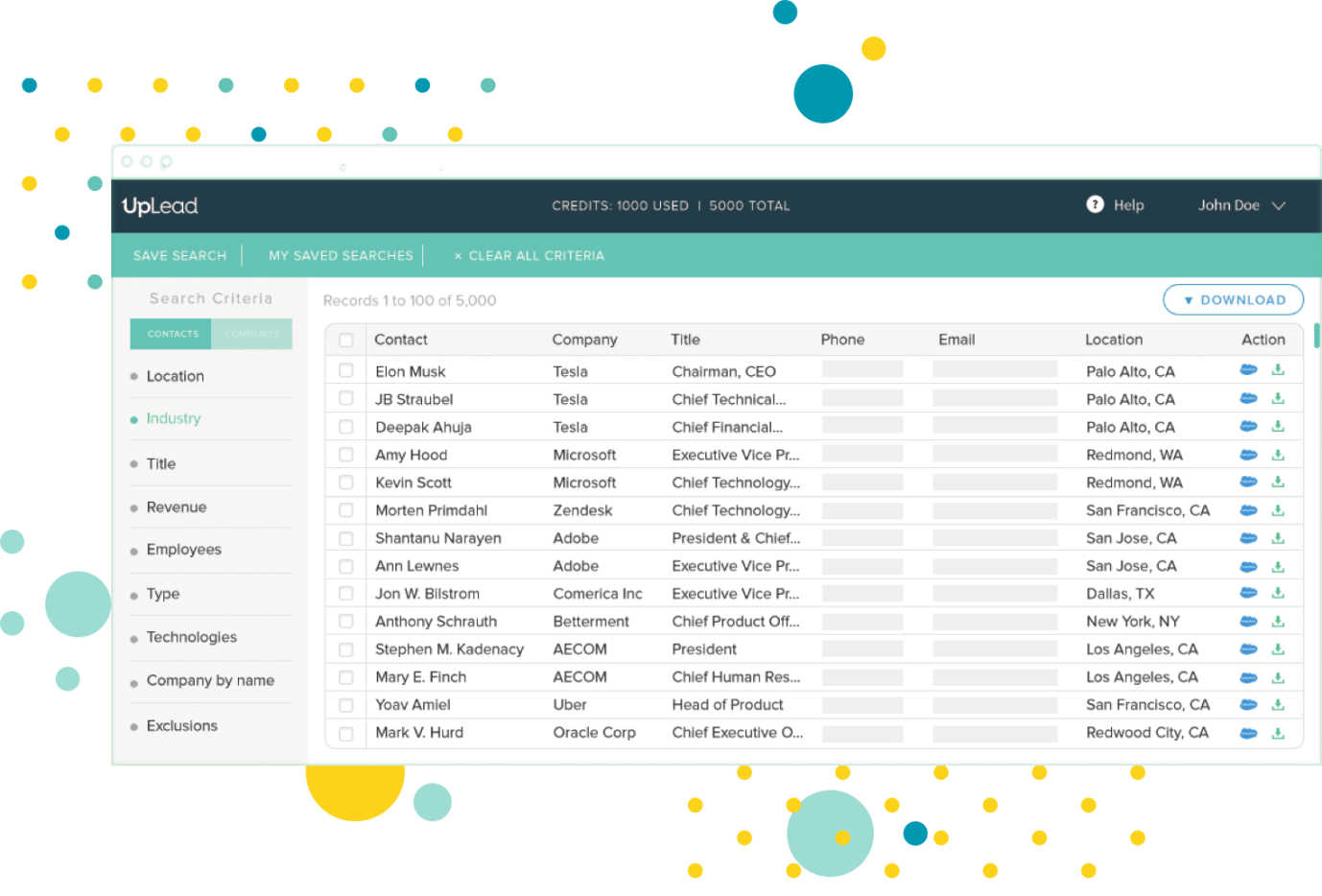
UpLead easily provides a huge lead database for inside sales reps to use
Greater Efficiency and Scalability: Inside sales representatives can manage a higher volume of warm leads and make significantly more contacts per day compared to field sales reps who might only manage one or two in person meetings. This efficiency creates a faster sales cycle by an average of 20% for companies with inside sales teams nurturing leads effectively.
Highly Data-Driven and Coachable: Inside sales is inherently more data-driven since all sales activities (phone calls, emails, virtual meetings) are logged in customer relationship management CRM systems, creating rich datasets for sales performance metrics analysis. High-performing sales teams are more likely to use AI-powered sales tools like lead scoring and next-best action suggestions for their sales work.
Adaptability to Modern Buyer Preferences: The sales model aligns with modern B2B buyer behavior, where 70-80% of buyers prefer remote human customer interactions or digital self-service over in person interactions during their customer journey.
What Are the Advantages of Outside Sales?
The most significant advantage of outside sales teams is the human factor. With face to face meetings, outside sales representatives can build stronger personal customer relationships and handle complex negotiations more effectively. Customer communications won’t land in spam folders or be missed entirely when outside salespeople are sitting across from their prospect addressing their prospect’s pain points directly.
Another advantage is discovering businesses that may lack online presence or technological sophistication. Outside sales reps can spot opportunities that inside sales teams might overlook, particularly in traditional industries or local markets where building relationships through trade shows and in person interactions remains important.
Why Is the Hybrid Model the New Standard?
The hybrid model combining inside and outside sales is now the established standard, not a future trend. Over 90% of B2B enterprises are planning to maintain a hybrid sales structure, with McKinsey reporting that this approach can drive up to 50% more revenue by improving customer engagement (McKinsey next-gen B2B sales).
Companies with hybrid work environments are more likely to see significant growth, with 35% of hybrid companies reporting over 10% revenue growth compared to 28% of non-hybrid companies. Over 75% of B2B buyers and sellers now prefer digital self-serve and remote engagement over traditional face to face conversations during their sales process.
The most effective approach involves using inside sales for initial prospecting, qualification, and nurturing leads, while deploying outside sales teams for high-value deals, complex negotiations, and relationship maintenance with existing clients through account manager roles.
How Much Do Inside Sales Reps Make?
Inside sales compensation varies significantly by role and experience level. Outside sales representatives have an average base salary that is approximately 36% higher than inside sales counterparts, but their On-Target Earnings (OTE) are only about 9.2% higher due to different commission structures affecting how inside sales reps work.
Sales Development Representatives (SDR) Compensation:
- Base salary: $50,000-$65,000
- On-Target Earnings (OTE): $55,000-$85,000
- Compensation split: 70/30 or 60/40 (base/variable)
Account Executive (AE) Compensation:
- Base salary: $50,000-$70,000
- On-Target Earnings (OTE): $100,000-$140,000
- Compensation split: 50/50 (base/variable)
According to Built In’s 2025 data, the average base salary for inside sales reps is $53,964, with total compensation (OTE) of $82,442 (Built In). Around 80% of sales compensation plans incorporate accelerators, which increase commission rates for performance that exceeds quota in closing deals.
What Are the Steps in a Modern Inside Sales Process?
A modern inside sales process follows five key steps: prospecting and lead generation, connecting and qualifying, discovering and presenting, handling objections and closing deals, and following up and nurturing leads. This systematic sales process ensures consistent results and provides a framework for scaling your sales activities across inside sales teams.
The sales process varies depending on your product complexity and sales cycle length. Simple software sales subscriptions might complete in one or two customer interactions, while enterprise software sales could take months and involve multiple stakeholders throughout the customer journey.
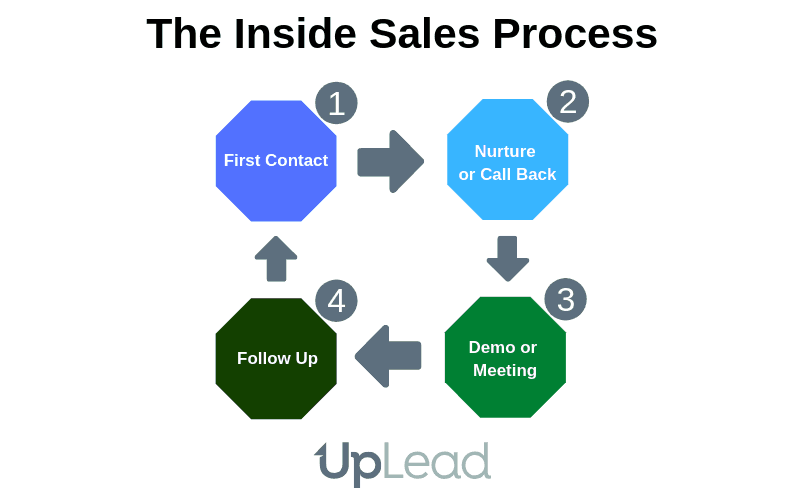
Step 1: Prospecting and Lead Generation
This is where potential customers enter your inside sales pipeline. Your sales teams identify prospects through various channels including cold outreach, inbound sales, social selling, or referrals. The key is targeting prospects who match your Ideal Customer Profile (ICP) to maximize conversion rates when inside sales representatives make initial contact.
Modern prospecting leverages sales intelligence tools to identify buying signals, company growth indicators, and technology usage patterns. This data-driven approach helps prioritize cold calling efforts and personalize initial contact attempts for better inside sales success.
Step 2: Connect and Qualify
Once you’ve identified prospective customers, the next step involves making initial contact and qualifying their fit for your solution. This stage determines whether the potential clients have the budget, authority, need, and timeline (BANT) to move forward in your sales process.
Effective qualification saves time by focusing sales activities on prospects most likely to convert into paying customers. Sales development reps (SDRs) typically handle this stage, using discovery questions to understand pain points and business challenges through phone calls and customer communications.
Step 3: Discover and Present
During this phase, account executives conduct deeper discovery calls to understand specific business requirements and present tailored solutions. This might involve product demonstrations, case studies, or proof-of-concept presentations using video conferencing technology for virtual meetings.
The key is connecting your solution’s features to the prospect’s specific business outcomes. Successful presentations focus on value creation rather than feature listings, showing how your solution addresses their unique challenges in building relationships with target customers.
Step 4: Handle Objections and Close
Every sales process involves objections around price, timing, features, or decision-making authority. Skilled inside sales reps anticipate common objections and prepare responses that address underlying concerns while moving the customer interaction forward in their sales pipeline.
Closing techniques in inside sales often involve creating urgency through limited-time offers, demonstrating clear ROI calculations, or providing risk-reduction guarantees like free trials or money-back guarantees when working to sell products effectively.
Step 5: Follow-Up and Nurture
This stage involves maintaining contact with prospects who aren’t ready to buy immediately and ensuring successful onboarding for new customers. Effective follow-up systems prevent warm leads from going cold and maximize lifetime customer value through ongoing customer relationship management.
Timing is crucial here. Following up too quickly appears desperate, while waiting too long risks losing the opportunity to competitors. Testing different follow-up cadences helps optimize your approach for your specific market when inside sales reps work with their assigned prospects.
What Are the Key Metrics and KPIs for Inside Sales Success?
Inside sales success is measured through three categories of metrics: activity metrics (leading indicators), pipeline metrics (efficiency indicators), and outcome metrics (lagging indicators). Tracking the right sales performance metrics helps identify bottlenecks, optimize performance, and predict future revenue for inside sales teams.
The most successful inside sales representatives track both quantity and quality metrics, balancing activity volume with conversion rates and deal sizes throughout their sales activities.
Activity Metrics (Leading Indicators)
These metrics measure the volume of sales activities and predict future pipeline health for inside sales teams:
- Phone Calls Made: Target volume varies by role and market
- Connection Rate: Percentage of calls answered by prospects
- Emails Sent: Track both volume and response rates for cold outreach
- Virtual Meetings Booked: Qualified appointments or demos scheduled with potential customers
Pipeline and Efficiency Metrics
These metrics measure how effectively prospects move through your sales process:
- Lead Response Time: (Timestamp of First Response – Timestamp of Lead Creation) / Number of Leads
- Sales Cycle Length: Sum of Days for All Closed Deals / Number of Closed Deals
- Conversion Rate: (Number of Conversions to Next Stage / Total Number of Leads in Previous Stage) × 100
- Lead-to-Opportunity Rate: Typically varies by industry for B2B companies
Outcome Metrics (Lagging Indicators)
These metrics measure final results and business impact from inside sales activities:
- Quota Attainment: (Actual Sales for Period / Sales Target for Period) × 100
- Win Rate: (Number of Deals Won / Total Number of Opportunities) × 100
- Average Deal Size: Total Value of Closed-Won Deals / Number of Deals Won
- Customer Acquisition Cost (CAC): (Total Sales & Marketing Costs) / Number of New Customers Acquired
Modern Inside Sales Strategies and Techniques to Implement
Modern inside sales success requires mastering digital-first strategies that align with how today’s B2B buyers research and purchase solutions. The most effective techniques combine technology, personalization, and building relationships to create scalable revenue engines for inside sales teams.
These sales strategies go beyond traditional cold calling to encompass social selling, video prospecting, account-based approaches, and AI-powered personalization for reaching target customers effectively.
Lead Generation Strategies
Strong lead generation is vital to any inside sales strategy. Without a consistent flow of qualified prospects, even the most skilled sales teams cannot achieve their targets for converting potential customers into paying customers.
Cold Calling and Emailing
While traditional, cold outreach remains effective when executed strategically by inside sales representatives. The key is thorough research and personalization rather than generic, high-volume approaches that fail to address prospect’s pain points effectively.
Modern cold calling focuses on providing value upfront through industry insights, relevant case studies, or useful resources. The goal is starting customer conversations, not making immediate sales pitches during initial contact.
Paid Advertising and Traffic Generation
LinkedIn, Google, and Facebook ads remain viable channels for generating qualified traffic and warm leads. The key is targeting specific buyer personas with compelling offers that address their pain points during the customer journey.
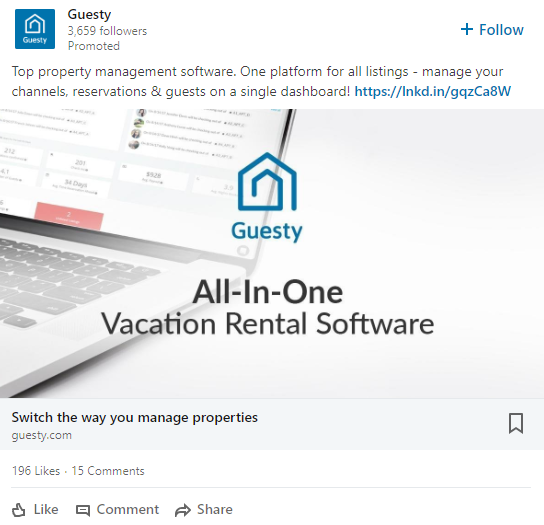
LinkedIn Ad for inside sales teams
For B2B inside sales, LinkedIn Sales Navigator and paid ads offer precise targeting by job title, company size, and industry. However, organic relationship building often proves more effective than paid promotion for software sales and complex B2B sales models.
Lead Magnets and Content Marketing
Offering valuable content like whitepapers, free courses, or consultations attracts prospective customers while capturing contact information for nurturing campaigns that inside sales reps can use in their sales pipeline.
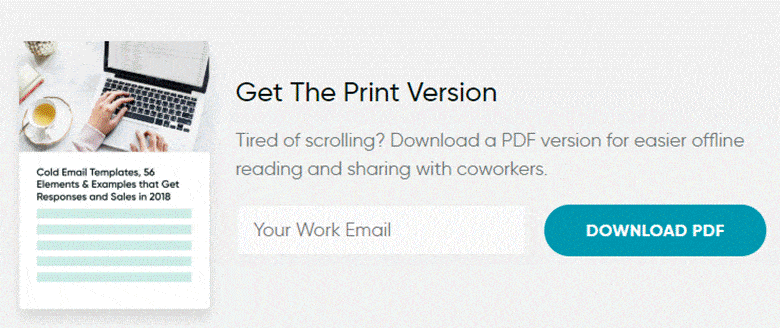
Lead magnet on the UpLead blog for inside sales representatives
Creating high-quality lead magnets requires significant investment in research and production. Low-quality offerings can damage your brand reputation and reduce conversion rates throughout your sales process when trying to sell products to target customers.
Social Selling: Building Relationships Digitally
Social selling leverages social media platforms, primarily LinkedIn for B2B, to find, connect with, and nurture prospects through building relationships rather than direct pitches. It’s about establishing credibility and trust by sharing valuable content and engaging in relevant customer conversations with potential clients.
Social sellers create opportunities and are more likely to hit quota compared to traditional prospecting approaches. With LinkedIn reaching over 1 billion users and a high percentage of B2B marketers using it for lead generation, social selling has become essential for modern inside sales success.
Effective social selling involves consistent content sharing, thoughtful engagement with prospects’ posts, and personalized connection requests that reference shared interests or mutual connections during customer interactions.
Video Prospecting: Cutting Through the Noise
Video prospecting uses short, personalized videos in sales outreach to grab prospects’ attention and build human connections with potential customers. Instead of text-only emails, inside sales reps record brief messages introducing themselves, explaining value propositions, or demonstrating product features.
This approach cuts through crowded inboxes by making customer communications more personal and memorable. Video messages build trust faster than text by putting a face to the name and can significantly increase response rates while simplifying complex concepts through visual demonstration in the sales process.
Sales tools like Loom, Vidyard, and BombBomb make video creation and sharing simple, allowing inside sales representatives to record personalized messages quickly and track engagement metrics for their sales activities.
Account-Based Selling: A Targeted Approach
Account-Based Selling (ABS) is a hyper-focused sales strategy where sales teams and marketing teams collaborate to target a select list of high-value accounts, treating each account as a ‘market of one’. Instead of broad lead generation, ABS concentrates resources on penetrating specific companies that represent the highest revenue potential for inside sales teams.
This approach ensures efficient resource allocation, typically results in larger deal sizes, and achieves higher conversion rates by aligning all touchpoints around specific account needs and buying processes during the customer journey.
Successful ABS requires close sales and marketing alignment, detailed account research, personalized content creation, and coordinated multi-channel outreach campaigns targeting multiple stakeholders within each target account using various digital channels.
What Is the Role of AI in Inside Sales?
AI is transforming inside sales by automating repetitive sales tasks, improving lead prioritization, and enabling hyper-personalization at scale. High-performing sales teams are more likely to use AI than underperforming teams, with sales professionals currently using AI tools in their daily sales work.
AI-Powered Lead Prioritization: AI shifts lead scoring from manual systems to dynamic, predictive models that analyze historical customer data and real-time engagement signals to identify prospects most likely to convert into paying customers.
Automation of Repetitive Tasks: AI automates administrative sales tasks that consume a significant portion of an inside sales rep’s time, saving hours daily. By 2025, a high percentage of B2B sales engagements are expected to occur via digital channels, many automated.
Hyper-Personalization at Scale: Sales professionals report using tools like ChatGPT to write sales content. AI analyzes customer data to craft highly tailored messages that resonate with specific buyer personas and address prospect’s pain points effectively.
Predictive Forecasting: AI-powered forecasting delivers improved accuracy in predicting deal outcomes compared to traditional methods. This improved accuracy helps sales leaders make better resource allocation decisions and set realistic targets for inside sales teams.
Lead Nurturing and Follow-Up
Effective lead nurturing prevents prospects from forgetting about your solution while they’re not ready to buy immediately. Without systematic follow-up, competitors often capture deals from prospective customers you initially engaged through your sales activities.
The most effective nurturing campaigns combine multiple digital channels including email sequences, retargeting ads, social media engagement, and periodic check-in phone calls for ongoing customer interaction.
Email Nurturing Campaigns
Email allows potential customers to consume your message on their timeline without pressure. Effective campaigns add urgency through limited-time offers or demonstrate ongoing value through educational content that addresses their business challenges.
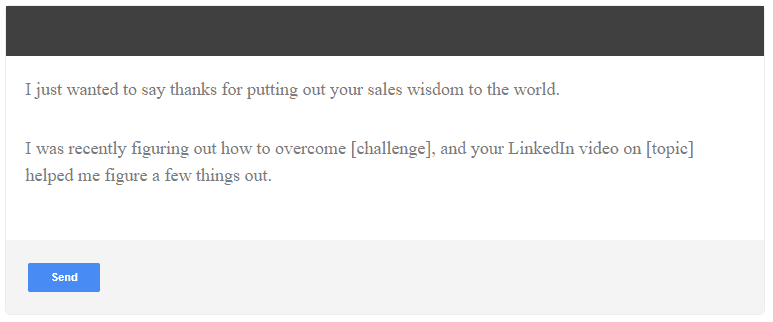
The most important element is maintaining a personal, conversational tone. Testing shows that regardless of industry, people prefer feeling like they’re part of a human customer conversation rather than receiving corporate marketing messages in their customer communications.
Direct Mail Integration
Physical mail has regained effectiveness in our digital age because it’s unexpected and memorable for potential clients. Getting a thoughtful sales letter stands out when most customer communications happen electronically through digital channels.
The challenge with direct mail is tracking attribution. Including unique coupon codes or specific references helps measure response rates and ROI from mail campaigns when inside sales representatives follow up with prospects.
How Do You Build a High-Performing Inside Sales Team?
Building a high-performing inside sales team requires strategic role definition, careful hiring for essential key skills, and creating clear career progression paths. The most successful sales teams use a specialized “assembly line” model where different roles handle specific parts of the sales process.
Modern inside sales teams typically include sales development representatives (SDRs) for prospecting and qualification, account executives (AEs) for closing deals, and account managers (AMs) for nurturing existing clients. This specialization allows team members to develop deep expertise in their areas while creating efficient handoff processes.
Essential Team Roles and Structure
The specialized approach works best for most organizations, though smaller companies may need multi-skilled professionals who can handle multiple functions effectively when building relationships with potential customers.
Sales Development Representatives (SDRs)
Sales development reps focus on top-of-funnel sales activities including prospecting, qualifying warm leads against your Ideal Customer Profile, and booking virtual meetings for account executives. They master cold calling, email outreach, and social selling techniques for generating initial contact with prospective customers.
A successful inside sales rep in the SDR role combines strong communication skills with resilience and systematic prospecting approaches. They typically transition to AE roles after consistent performance in their sales work.
Account Executives (AEs)
AEs handle the full sales cycle from qualified leads, conducting discovery calls, delivering product demonstrations, managing objections, and closing deals with potential clients. They typically manage multiple active opportunities simultaneously in their sales pipeline.
The best AEs combine consultative selling skills with deep product knowledge and the ability to navigate complex B2B buying processes involving multiple stakeholders during their customer interactions.
Account Managers and Customer Success
These roles focus on expanding customer relationships with existing clients through upselling, cross-selling, and ensuring successful product adoption. An inside sales manager or account manager bridges the gap between sales activities and customer success for lasting customer relationships.
Sales Operations and Enablement
Sales operations professionals manage CRM software systems, analyze sales performance metrics, and optimize sales processes. Sales enablement specialists create training materials, battle cards, and competitive intelligence for inside sales teams.
What Key Skills Should You Hire For?
Essential sales skills for high-performing inside sales reps include active listening, effective communication, product knowledge, customer relationship management proficiency, time management, and resilience. These core competencies determine inside sales success across different roles.
Tech-Savviness: Proficiency with customer relationship management CRM systems, video conferencing platforms, and communication sales tools is non-negotiable in remote sales environments. Inside sales representatives must quickly adapt to new technologies and troubleshoot basic technical issues.
Effective Communication: Strong verbal skills for engaging phone conversations and sharp written skills for compelling customer communications. Building personal rapport has a substantial impact on converting prospects during the sales process.
Self-Motivation and Discipline: Without traditional office structure, inside sales reps must be self-starters who manage their own schedules and maintain focus throughout the day while performing their sales work.
Time Management and Organization: Daily planning can save hours of wasted time. Successful inside sales representatives prioritize high-value sales activities and maintain organized prospect databases for effective customer data management.
Resilience and Adaptability: Essential for bouncing back from rejection and adapting to different customer personalities and digital platforms. Inside sales involves significant rejection rates that require mental toughness for inside sales success.
Problem-Solving: Ability to handle client objections, navigate technical difficulties, and make decisions without immediate manager assistance during customer interactions with potential clients.
What Is the Career Path and Growth Potential?
Inside sales offers clear career progression paths with opportunities for both individual contribution and management roles. The typical progression starts with sales development representative roles and advances through multiple levels of increasing responsibility and compensation.
Stage 1: Sales Development Representative (SDR) – Entry point focusing on prospecting, qualifying warm leads, and booking virtual meetings. The transition from SDR to AE typically takes time with consistent quota achievement in sales activities.
Stage 2: Account Executive (AE) – Responsibilities shift to closing deals, managing full sales cycles, and handling complex negotiations with potential customers. AEs typically manage multiple deals simultaneously and earn significantly higher compensation.
Stage 3: Sales Leadership and Specialization – Career paths branch into several directions for inside sales professionals:
- Inside Sales Manager (managing and coaching sales teams)
- Senior/Enterprise AE (closing larger, more complex deals with target customers)
- Sales Operations or Sales Enablement roles
- Customer Success or Account Management for existing clients
- Marketing or business development reps roles
Key promotion criteria include consistently meeting or exceeding quotas, demonstrating leadership potential, and proactively developing sales skills through training and mentorship programs for inside sales success.
What Are the Biggest Challenges in Inside Sales (and How to Solve Them)?
The biggest challenges in inside sales include poor lead quality, sales rep burnout, and difficulty building relationships remotely with potential customers. These challenges are interconnected – poor customer data quality leads to wasted time, which contributes to burnout and reduces the energy available for building relationships with prospective customers.
Recent studies found that sellers feel burned out, with high administrative burdens and poor data quality cited as primary causes affecting inside sales representatives’ performance.
Challenge 1: Poor Lead Quality and Inefficient Prospecting
Inside sales reps waste significant time on non-revenue-generating sales tasks, spending less time actively selling to potential customers. Poor lead quality forces sales representatives to chase unqualified prospects, leading to frustration and reduced performance in their sales activities.
Solutions:
- Define a strict Ideal Customer Profile (ICP) with specific firmographic and behavioral criteria for target customers
- Implement lead scoring systems (companies refining lead scoring see better conversion rates)
- Invest in high-quality data providers that guarantee accuracy rates above 90% for customer data
- Align sales teams and marketing teams on lead qualification criteria
Challenge 2: Bypassing Gatekeepers and Reaching Decision-Makers
Gatekeepers are trained to shield decision-makers from sales calls, making it difficult for inside sales representatives to reach the people with buying authority. This challenge requires strategic approaches rather than aggressive tactics in customer interactions.
Solutions:
- Treat gatekeepers as allies by being respectful and professional during phone calls
- Use multi-channel approaches including email, LinkedIn, and phone for customer communications
- Leverage referrals and warm introductions when possible for initial contact
- Call during off-peak hours when gatekeepers may not be available
- Provide value to gatekeepers by sharing relevant industry insights through customer conversations
Challenge 3: Sales Rep Burnout and Maintaining Morale
Sales team attrition rates are higher than the overall labor force, with burnout being a primary factor. Poor customer data quality destroys morale as inside sales teams waste time on faulty information, which damages trust in leadership and sales processes.
Solutions:
- Promote work-life balance through flexible schedules and mental health support for inside sales reps
- Automate non-selling sales tasks like data entry and report generation
- Set realistic, achievable goals with regular recognition programs for sales activities
- Provide ongoing training and career development opportunities for inside sales professionals
- Invest in high-quality sales tools and customer data to reduce frustration
Challenge 4: Building Trust and Relationships Remotely
Without face to face meetings, inside sales reps must work harder to build trust and establish personal connections with potential clients. This requires different sales skills and approaches than traditional relationship building through in person interactions.
Solutions:
- Use video conferencing whenever possible to add visual connection during customer interactions
- Personalize outreach with specific research about prospective customers and their companies
- Share relevant case studies and social proof from similar customers during the sales process
- Maintain consistent communication cadences to stay top-of-mind with potential customers
- Provide immediate value through insights, resources, or introductions in customer communications
The Modern Inside Sales Tech Stack: A Strategic Guide
A modern inside sales tech stack consists of integrated sales tools that support every stage of the sales process, from prospecting to closing deals to customer success. The key is selecting tools that work together seamlessly rather than creating a disconnected collection of point solutions for inside sales teams.
Sales professionals report being overwhelmed by the number of tools in their tech stack. The most effective approach focuses on core categories that directly impact revenue generation while avoiding tool sprawl that reduces productivity for inside sales representatives.
Customer Relationship Management (CRM)
The customer relationship management CRM serves as the central nervous system for your sales organization, storing all customer data, tracking customer interactions, and managing deal progression. It provides a single source of truth that enables collaboration, reporting, and process automation for inside sales teams.
Key Tools:
- Salesforce Sales Cloud: The leading CRM provider globally with comprehensive customer relationship management features
- HubSpot Sales Hub: Pricing ranges from Starter to Professional to Enterprise levels for different inside sales team needs
- Close: Sales-focused CRM software for SMBs with various pricing tiers
- Pipedrive: Visual sales pipeline management for inside sales representatives
Sales Intelligence
Sales intelligence tools help find and qualify the right prospects efficiently by enriching customer data, identifying key decision-makers, and surfacing buying signals like company growth or technology usage for target customers.
UpLead: The Complete Sales Intelligence Solution
A sales manager at a high-growth FinTech company needed to identify enterprise potential clients for their new AI-powered compliance platform. Using UpLead’s advanced filtering capabilities, they created a highly targeted search for their inside sales team:
- Funding Filter: Companies with Series B or Series C funding in the last 12 months
- Technographics: Companies using both Salesforce CRM and AWS infrastructure (from UpLead’s database of tracked technologies)
- Intent Data: Companies actively researching “data compliance solutions” and “risk management software” for potential customers
The result was a laser-targeted list of companies that fit the ideal profile and demonstrated active buying intent. UpLead’s data accuracy guarantee and real-time email verification ensured the inside sales reps could immediately begin outreach with confidence for successful customer interactions.
Other Notable Sales Intelligence Tools:
- ZoomInfo – Comprehensive B2B database with intent data for prospective customers
- LinkedIn Sales Navigator – Advanced LinkedIn prospecting for inside sales professionals
- Apollo.io – All-in-one sales intelligence and engagement platform
- Cognism – GDPR-compliant B2B data provider for international inside sales teams
Sales Engagement Platforms
Sales engagement platforms execute and optimize multi-channel outreach at scale, automating communication sequences across email, phone calls, and social media while providing analytics to identify what works best for inside sales activities.
Key Tools:
- Outreach: Leading enterprise sales engagement platform for inside sales teams
- Salesloft: Comprehensive sales engagement and analytics for inside sales representatives
- Outplay: Multi-channel platform with email, phone, chat, SMS, and LinkedIn outreach capabilities
- Klenty: Sales engagement focused on personalization for customer communications
Conversation Intelligence
Conversation intelligence platforms record, transcribe, and analyze sales calls to uncover winning patterns, identify coaching opportunities, and provide insights into customer objections and sentiment during customer interactions with inside sales reps.
Key Tools:
- Gong.io: AI-powered conversation analytics and coaching for inside sales teams
- Clari Copilot (formerly Chorus.ai): Conversation intelligence and forecasting
- Revenue.io: AI-powered Revenue Action Platform built for Salesforce integration
- Outreach Kaia: Integrated conversation intelligence within Outreach platform for inside sales activities
Communication and Productivity Tools
These sales tools enable effective remote sales communication and help inside sales reps manage their daily sales activities efficiently.
Key Categories:
- Video Conferencing: Zoom, Microsoft Teams, Google Meet for virtual meetings with potential clients
- Video Messaging: Loom, Vidyard, BombBomb for personalized customer communications
- Email Tools: Gmail, Outlook with tracking extensions for customer interactions
- Dialers: PhoneBurner, Callhub, built-in CRM dialers for phone calls
Other Notable Tools by Category
Additional CRM Options: Zoho CRM, Freshsales, Inside Sales Box for customer relationship management
Social Selling Tools: Dux-Soup, LinkedInHelper, Shield Analytics for LinkedIn Sales Navigator optimization
Email Finders: Voila Norbert, Hunter.io, FindThatLead for prospecting potential customers
Specialized Services: Salelytics (outsourced inside sales BPO) for companies needing external inside sales teams
Frequently Asked Questions About Inside Sales
Is inside sales the same as telesales?
No. Inside sales focuses on consultative, multi-touch relationship building with potential customers through various digital channels. Telesales typically involves direct, transactional phone-based selling with quicker closes and less complex sales processes.
Inside vs. outside sales – when to use each?
Use inside sales for scalable lead generation, shorter sales cycles, and cost-effective customer acquisition. Use outside sales teams for high-value deals requiring face to face meetings, complex negotiations, and relationship-intensive sales processes with existing clients.
What do inside sales reps earn in 2025?
Inside sales representatives earn an average base salary of $53,964 with total compensation (OTE) of $82,442 in 2025 (Built In). Sales development reps start around $50,000-$65,000, while account executives earn $100,000-$140,000 OTE.
Does hybrid outperform pure inside sales?
Yes. Hybrid inside and outside sales models can drive up to 50% more revenue than pure approaches (McKinsey next-gen B2B sales). The combination leverages inside sales efficiency with outside sales relationship depth for optimal results.
What does an inside sales rep do daily?
Inside sales reps make phone calls to prospects, send personalized emails, conduct virtual meetings via video conferencing, update customer relationship management systems, follow up on warm leads, and nurture existing client relationships through various digital channels.
How do inside sales reps work remotely?
Inside sales representatives work from home offices using CRM software, video conferencing tools, sales engagement platforms, and customer data systems. They maintain productivity through structured schedules, virtual team meetings, and digital collaboration with sales teams.
Why Inside Sales Is the Engine of Modern Growth
Inside sales has evolved from a cost-cutting alternative to outside sales teams into the primary growth engine for modern B2B companies. The data is clear: inside sales teams are growing faster than outside sales, and companies with hybrid sales models are driving up to 50% more revenue than traditional field sales approaches.
The transformation reflects fundamental changes in buyer behavior and customer preferences. B2B customers now use an average of ten different digital channels throughout their customer journey, up from just five in 2016. With 80% of B2B sales interactions expected to occur in digital channels by 2025 (Gartner, via Pitcher), inside sales capabilities are no longer optional for sales professionals – they’re essential for competitive survival.
The most successful companies are those that embrace inside sales as a strategic advantage rather than a tactical necessity. They invest in high-quality customer data, advanced sales tools, and skilled inside sales representatives who can build lasting customer relationships and sell products entirely through digital channels without relying on in person meetings or trade shows.
As AI continues to automate routine sales tasks and improve personalization capabilities, inside sales teams will become even more efficient and effective at reaching target customers. The companies that master this sales strategy today will have significant competitive advantages as the market continues to evolve toward remote sales models.
Ready to build your own high-performing inside sales engine? Start with accurate, comprehensive prospect data that eliminates wasted time and reduces rep burnout. Your inside sales team’s success depends on the quality of leads they pursue – make sure you’re giving them the best possible foundation for growth through cost effective customer acquisition and successful customer interactions.

